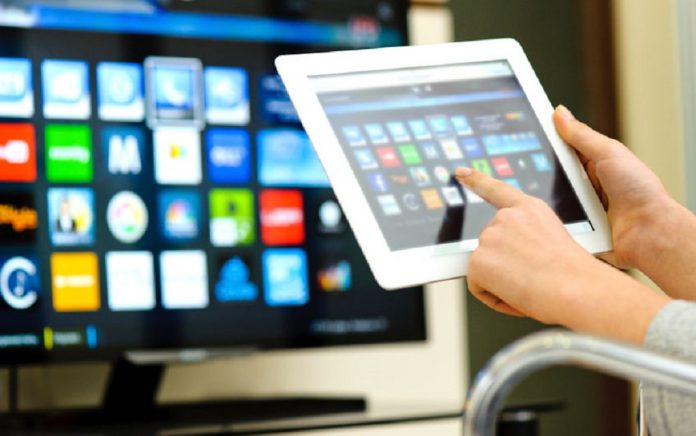Matt Spall, founder of Playora, discusses the issues that have arisen in our tech-filled world and the solutions that could help our business networking flow more smoothly.
Our working and home lives are becoming full of screens. LG recently showed off the 64-inch screen Wallpaper at CES 2017 and now they have one that comes in at just 1mm thick and just needs magnets to attach it to the wall – ideal for business presentations. In less than a year, technology has gone from the now-prolific curved screen TV to screens that can be rolled up like a piece of paper. Amazing!
So, it seems all the parts are there – a screen, or something plugged into it that can display images or video that it gets from somewhere else, a device in your hand or in your lap that gives you instant feedback the moment you touch or slide your finger across it and a WiFi network in your office that connects it all up.
But there is one major hurdle stopping you from sharing media across all of these screens and devices: TVs, smartphones, tablets and smartwatches are made by so many different people. Some allow for cross-device compatibility: send video from your Samsung phone to your Samsung TV, send photos between Apple devices using Airdrop. The problem is we’re not there yet with cross-manufacturer compatibility.
There are standards slowly being developed: Samsung’s Tizen system supports various types of DLNA, Miracast and DiAL screen sharing protocols across its range, LG has utilised both WebOS and Netcast, and Sony is producing its own platform, as well as a Google TV variant.
On top of that (literally, over-the-top or OTT) you have Google’s Chromecast, Roku, Apple TV, Amazon’s Fire TV and a host of other generic TV plug-in sticks and boxes. But none of these solutions are independent and put the user at the centre. What’s needed now is something that centres the media experience to the user, around their most familiar computer interface.
Enter the new kid on the block, Playora. The basis of this new technology and app is that it gives the user the ability to touch something on one screen, and have that appear on another screen without fuss, wires or layers of menus. And that screen doesn’t have to be in the same room – or even the same country!
Imagine how this could change your networking. At a networking event you get chatting to your perfect prospect – they are interested, but time is limited. You didn’t bring your laptop, so how can you show them the video that will get them excited?
Two choices: use your phone and swipe the video across to their Smart TV, or call the guys back at the office and ask them to swipe the video. No emails needed and no cables, you don’t even need to be in the same room!
Expect more exciting news. Google is working on what it’s calling an “intra-ocular device” – a lens that could become a tiny, injectable transparent screen that sits in your eye, connected to your phone by Bluetooth.
This could mean sharing your images and videos directly into someone’s eyes. This would be like creating a personal 3D cinema and built-in virtual reality unit all in one. How cool is that?
Playora is raising £300,000 crowdfunding right now on Crowdcube, check out our pitch and see how you can buy a chunk of equity in the company that’s making science fiction science fact: https://www.crowdcube.com/playora
Founded by BAFTA-winning serial technical entrepreneur Matt Spall, Playora is the trading name of Invisiplay Limited. The company was formed with the specific purpose of making it easier to use so-called ‘smart’ technology for entertainment by people left behind by the digital divide.
Website | Crowdcube | Twitter | Facebook
Photo © sauvignon / 123RF Stock Photo


